By Matt Fogleson and Celeste C.B. Bennett
From among 11 projects that garnered Honor Award recognition, three also took home top prizes — the OPAL (Outstanding Projects and Leaders) trophy, Silver, and Bronze awards — as Outstanding Civil Engineering Achievements. Awards were presented Oct. 20 at the OPAL Gala during ASCE’s annual convention in Chicago. From new stadiums to innovative neighborhood revitalizations, these 11 projects stood out as this year’s finest in civil engineering.
2023 OCEA Award Winner
Climate Pledge Arena
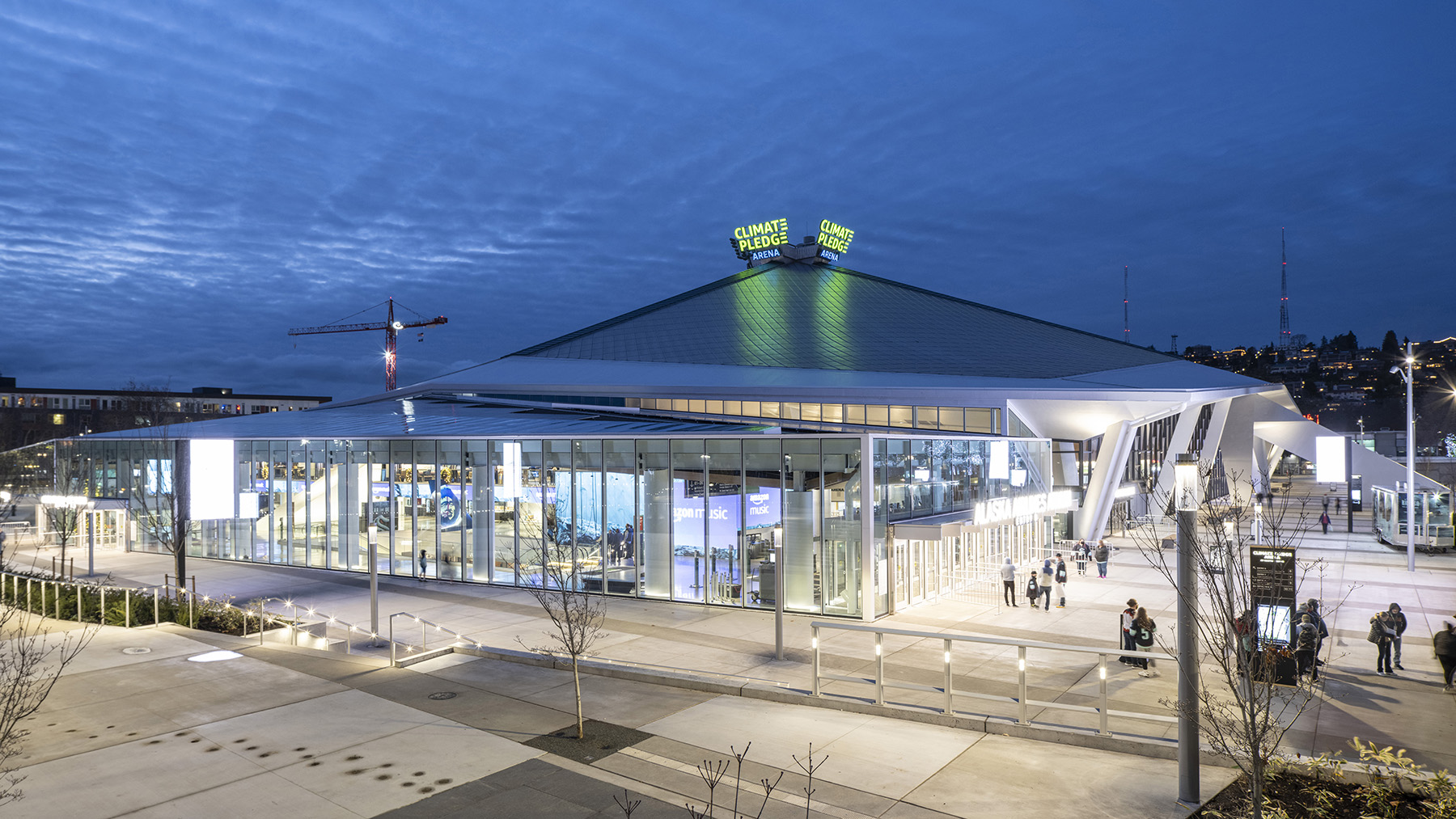
It was a challenge nearly 60 years in the making and filled with the highest of hurdles.
Yet, the team charged with renovating and expanding what is now known as the Climate Pledge Arena passed with flying colors, earning top honors in this year’s Outstanding Civil Engineering Achievement Awards.
Beginning its life as the Washington State Pavilion, a key part of the 1962 world’s fair in Seattle, the venue underwent a series of renovations and name changes over the decades. Numerous college and professional sports teams have called the arena home, most notably the NBA’s Seattle SuperSonics, a basketball expansion team that launched in 1967 and spent the bulk of its stay at the arena before relocating to Oklahoma City after the 2007-08 season.
While the SuperSonics’ departure left a void in Seattle’s sports scene, the city struck gold again in late 2018 when it was awarded an NHL expansion team that would begin play in 2021. With this came the challenge of preparing the venue, then known as KeyArena, for hockey in time for the first drop of the puck.
But the ticking clock was far from the only complicating factor. First and foremost was performing what would be a near-total demolition and rebuild while preserving the building’s original roof, curtain wall, and exterior concrete elements with virtually no impact on their aesthetics. This stipulation was the result of the Seattle Landmarks Preservation Board classifying the arena as a local landmark not long before the NHL awarded the city a franchise, the Seattle Kraken.
The $930 million project would also involve excavating 680,000 cu yd of soil to make way for what would be a below-grade arena. Other considerations included the location of the arena in a high-seismicity zone and the owner’s commitment to the venue being the world’s first net-zero-certified arena.
With Thornton Tomasetti providing structural and construction engineering, a plan took shape.
The team used 3,700 tons of temporary steel framing to uphold the majority of the gravity load of the roof, which weighed in at 22,000 tons, while ensuring resistance to wind and seismic lateral forces during 20 months of construction, per the OCEA submission. This temporary roof shoring system also had to be designed to allow access to and clearance of the aforementioned soil and installation of the permanent structure around the temporary structure.
The team continually altered the system during the excavation process, likening it to building a ship in a bottle. Excavation proceeded in alternating sections or quadrants, which enabled the contractor to install bracing trusses in a “top-down” sequence as soil removal allowed.
In the submission, Thornton Tomasetti and engineer of record Brian MacRae, P.E., S.E., note that the company’s Advanced Project Delivery approach trimmed months off the schedule. “Our construction engineering and structural design teams worked in parallel with the steel contractor to provide a fully coordinated and connected Tekla model for the 8,700 tons of permanent steel for the arena and parking garage, while producing full shop drawings for the 3,700 tons of temporary roof shoring structural steel,” the submission reads. “With APD, the team was able to accelerate the steel procurement and detailing process.”
The team also devised a plan to preserve the arena’s 30,000 sq ft glass facade, which was held in place by steel mullions and spanned from the roof to the arena’s entry. The glass was removed, cataloged, and stored nearby during the renovation before being reinstalled.
Before executing its plan, the team carried out a condition assessment of the roof and the facade and created a 3D model from design drawings, then performed a laser scan to verify the building’s geometries. The team’s facade engineering group outlined options to accommodate inter-story drift in the event of a major seismic event, according to the submission.
To reduce the amount of retrofitting to exposed concrete elements — and therefore preserve the structure’s aesthetics — the team strategically placed seismic fuses, which lessened seismic forces on these components.
The arena’s roof also received a seismic retrofit to meet current codes. The team used a performance-based design process reliant on “realistic ground motions based on site-specific seismicity” and accounting for the building’s nonlinear behavior. This approach resulted in a significant reduction in the number of steel roof members that needed retrofitting. To limit seismic demands on the roof’s supporting Y-shaped columns, the team employed low-friction slider connections to seismically isolate them from the upper levels of the new bowl structure.
The submission lists other noteworthy features of the Climate Pledge Arena:
- Tuned mass dampers that provide vibration control for a 275 ft press level bridge using two trusses.
- A rigging grid that supports more than 200,000 lb of loading for concerts and other shows.
- A new event level that is 15 ft below the lowest portion of the previous event floor elevation. The venue features four complete arena levels at and below the surrounding grade and two levels above the surrounding grade.
In an era in which new sports facilities often carry the brand of corporate sponsors, Climate Pledge Arena instead is named after a movement that saw hundreds of companies and organizations sign a commitment to reach net-zero carbon by 2040. In keeping with that promise, the arena owner took several eco-centered measures, including:
- Converting mechanical systems, gas combustion engines, heating, dehumidification, and cooking to electric power.
- Combining solar panels with off-site supplementary renewable energy to provide 100% renewable energy power.
- Harvesting rainwater off the roof, collecting it into a 15,000 gal. cistern, and turning it into the NHL’s greenest ice.
The 800,000 sq ft arena opened in October 2021 in time for the Kraken’s home opener.
2023 OCEA Silver Award Winner
SoFi Stadium
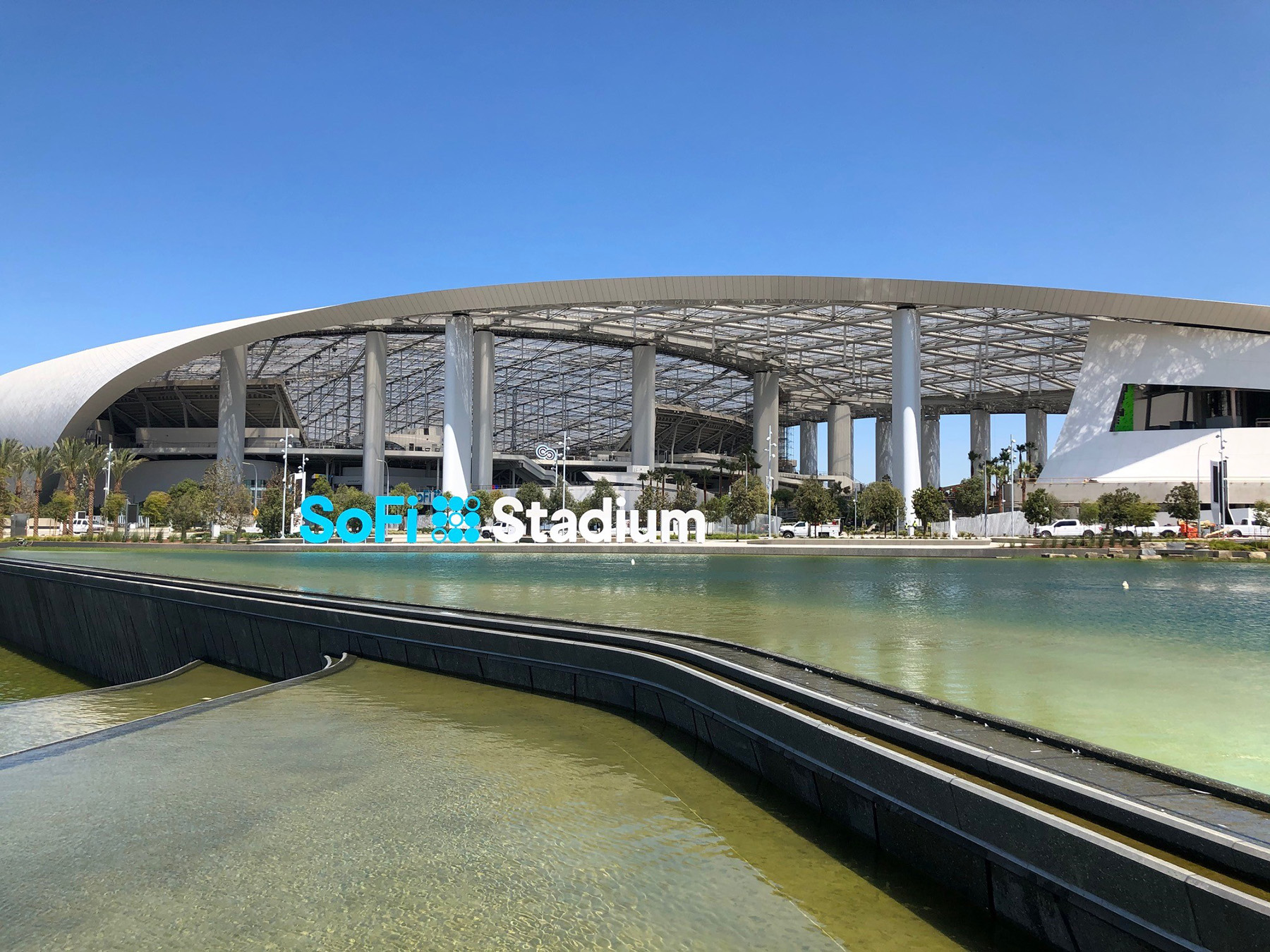
With the pressing need to have a state-of-the-art football stadium built in time for the two Los Angeles NFL teams to start their 2020 seasons, planners decided the optimal road to success was dividing the project into three major independent structural systems. The complexity of the project was compounded by SoFi Stadium being yards from an active earthquake fault and under the two main flight paths of one of the nation’s busiest airports.
Ultimately, the project team reached several construction and sports industry firsts on this massive project while working at a brisk pace after breaking ground in November 2016. The success and ingenuity of the project were heralded in the architecture, engineering, and construction industry. And now the team, which included Deering Volkmann Viola, P.E., M.ASCE, of David Evans and Associates Inc. as the engineer of record, has earned another major accolade: the Silver honor in the OCEA Awards.
The stadium is the centerpiece of Hollywood Park, formerly home to a famed horse racing track. The complex also includes the American Airlines Plaza and YouTube Theater, both of which share a giant, transparent canopy roof with SoFi Stadium. The 850,000 sq ft canopy roof and its support structure make up one of the three aforementioned independent structural systems.
Among the 255 roof panels, 46 are motorized to open or close, depending on weather conditions. These panels were designed, permitted, and fabricated as 3D models, according to the submission.
The facility also boasts the world’s longest cable-net structure with a single-layer ethylene tetrafluoroethylene roof system, coming in at five times the size of any past project. Thanks to the first large-scale application of triple-pendulum seismic isolators in a long-span structure, the lightweight roof and its supporting structure respond independently, bolstering safety.
Vertically posttensioned, self-centering segmental concrete columns, which had never been used in a high-seismic building application, sped up the construction of 38 giant, hollow concrete columns supporting the roof shell.
The ETFE roof creates a massive media screen, enabling advertising and sponsorship opportunities inside and out. Dual sided and 70,000 sq ft, the stadium’s jumbotron is the world’s largest roof-hung video board and gives fans clear views of the on-field action.
Because air traffic directly over the venue limited the height of the stadium, the project team opted to go about 100 ft below grade for the stadium’s seating bowl, the project’s second independent structural system. Workers excavated about 5 million cu yd of soil for the stadium and about 7.5 million cu yd for the entire site.
Standing 100 ft tall and stretching more than 3,000 ft in length, the largest-ever constructed mechanically stabilized earth wall is the third independent structural system of the project. It surrounds the stadium and provides seismic protection by allowing safe movement in the event of an earthquake.
Billed as the world’s first indoor/outdoor stadium, the multibillion-dollar venue opened in time for the Rams and Chargers to play their home openers there in 2020. A gem among NFL stadiums, it already has had one iconic moment: the Rams’ championship victory in February 2022, the second time an NFL team won the Super Bowl in its home stadium. More memories are sure to be created at the 2028 Summer Olympics, when SoFi Stadium hosts the opening and closing ceremonies and some athletic competitions, including soccer.
“SoFi Stadium has been acclaimed by the media and fans as the most beautiful and iconic new stadium in the world, and it has been embraced by Angelenos as a new landmark of civic pride for the entire Los Angeles community,” the OCEA submission reads.
2023 OCEA Bronze Award Winner
Rockefeller Refuge Gulf Shoreline Stabilization
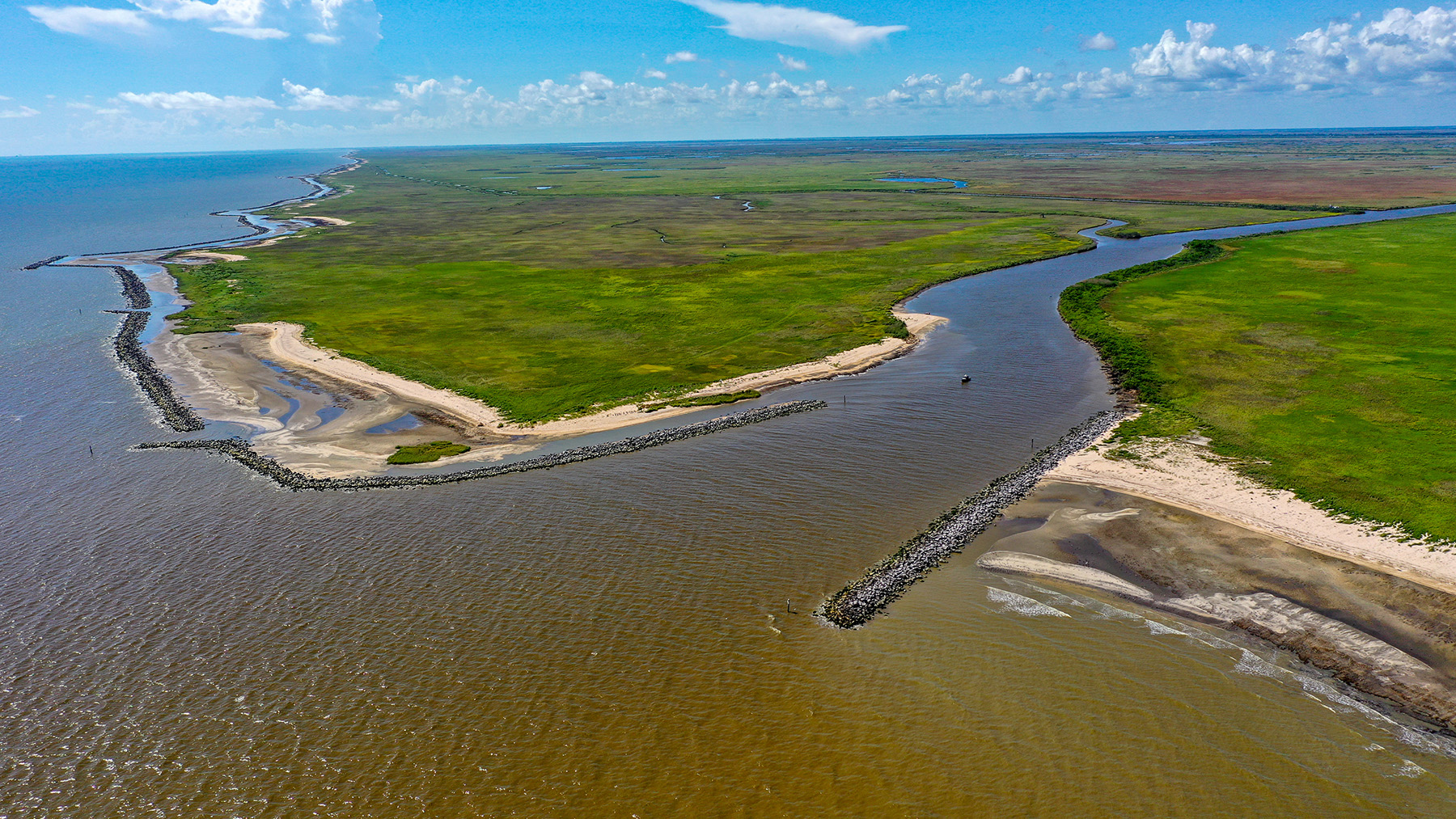
Louisiana loses about 18,000 acres of wetlands annually to erosion. Included in that number is land lost at Rockefeller Wildlife Refuge, one of the most productive marshland research laboratories in the nation. The refuge, which runs more than 26 mi along the Gulf of Mexico coast in southwest Louisiana, has lost more than 15,000 acres since its establishment in 1920.
The project team engaged in a lengthy and highly competitive pursuit of funding in an attempt to stem the erosion. The team members’ persistence resulted in a 4 mi long lightweight aggregate core breakwater completed in May 2020, the first of its kind in an open gulf. Just months after completion, the project faced two serious tests, as hurricanes Laura and Delta hit the region. The breakwater came through the storms unscathed. The protected area suffered erosion from the storms, but the loss was significantly less than what occurred in unprotected areas.
The success of the $34 million project, with HDR Engineering Inc. as the lead design firm, resulted in Bronze honors in the OCEA Awards.
More than 10 years earlier, the project team tested four shoreline protection methods at Rockefeller Wildlife Refuge, which draws over 200,000 visitors annually, notes the submission. The LWAC breakwater, whose core comprises stacks of woven geotextile fabric bags filled with lightweight clay material, proved the best option.
Data collected during the test program showed a reduction of wave heights by 96%, wave energy by 99.7%, and shoreline change by 93%. The LWAC breakwater, which is about 60 ft wide at its base, 18 ft wide at its crest, and 6-7 ft tall, “met all our criteria,” Brett Geesey, P.E., an HDR office principal who was the project’s engineer of record, told Civil Engineering magazine in the January/February 2021 issue. For the final design, the team cut costs by repurposing the original trial structures, reusing more than 5,500 tons of armor stone, and locally sourcing the aggregate, according to the team’s OCEA submission.
It was neither practical nor permitted for the contractor to access the site by land or work from land, so construction was performed from floating equipment, according to the entry. Shallow-water barges were positioned 150 ft offshore on the gulf side of the breakwater. The geotextile bags were filled off- site and transported by barge.
The team also had to account for difficult soil conditions. Below 5 ft of lightweight shell hash is 40 ft of soft clay. Below that lies stiff clay. The LWAC helps ensure the lateral spread of the riprap load, reducing settlement.
Wildlife protection was a top priority of the project. Migratory birds are prominent at Rockefeller, which is also home to the nation’s highest alligator nesting density. Sport fishing is popular, with anglers catching everything from shrimp to speckled trout. The team took measures to ensure that the project did not disrupt the ecosystem. With this in mind, the breakwater was built with small gaps to allow movement of water, sediment, and marine organisms between the marsh and the gulf.
“(This) first-of-its-kind project halts the eroding shoreline, protects crucial habitat, and preserves a future for this vital refuge,” the submission reads.
2023 OCEA Honor Awards
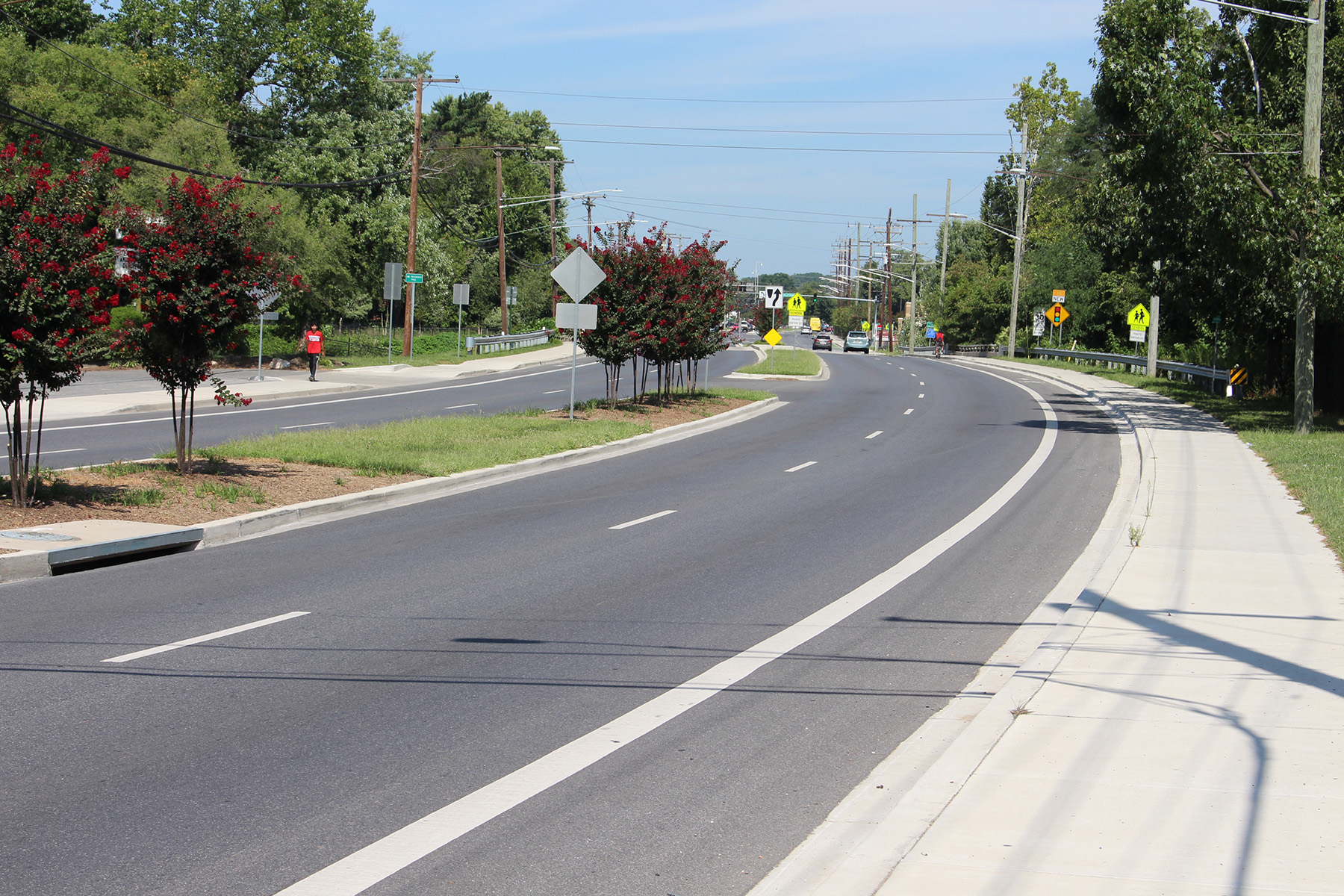
Project: Ager Rd., Green-Complete Streets Project, Hyattsville, Maryland
Engineer of record: Russell Anderson, P.E., Wallace Montgomery Associates
Summary: The project was developed to improve functionality, safety, and aesthetics along a 1.57 mi stretch of road in Hyattsville. Improvements include speed-reduction features, upgraded traffic signals, and stormwater management. The community also benefits from enhanced street lighting, a new bike lane, expansion of the Anacostia Riverwalk Trail, and transformed green spaces, revitalizing this area. In all, the project boosts accessibility and economic development and lowers the level of nutrients in the Anacostia River watershed.
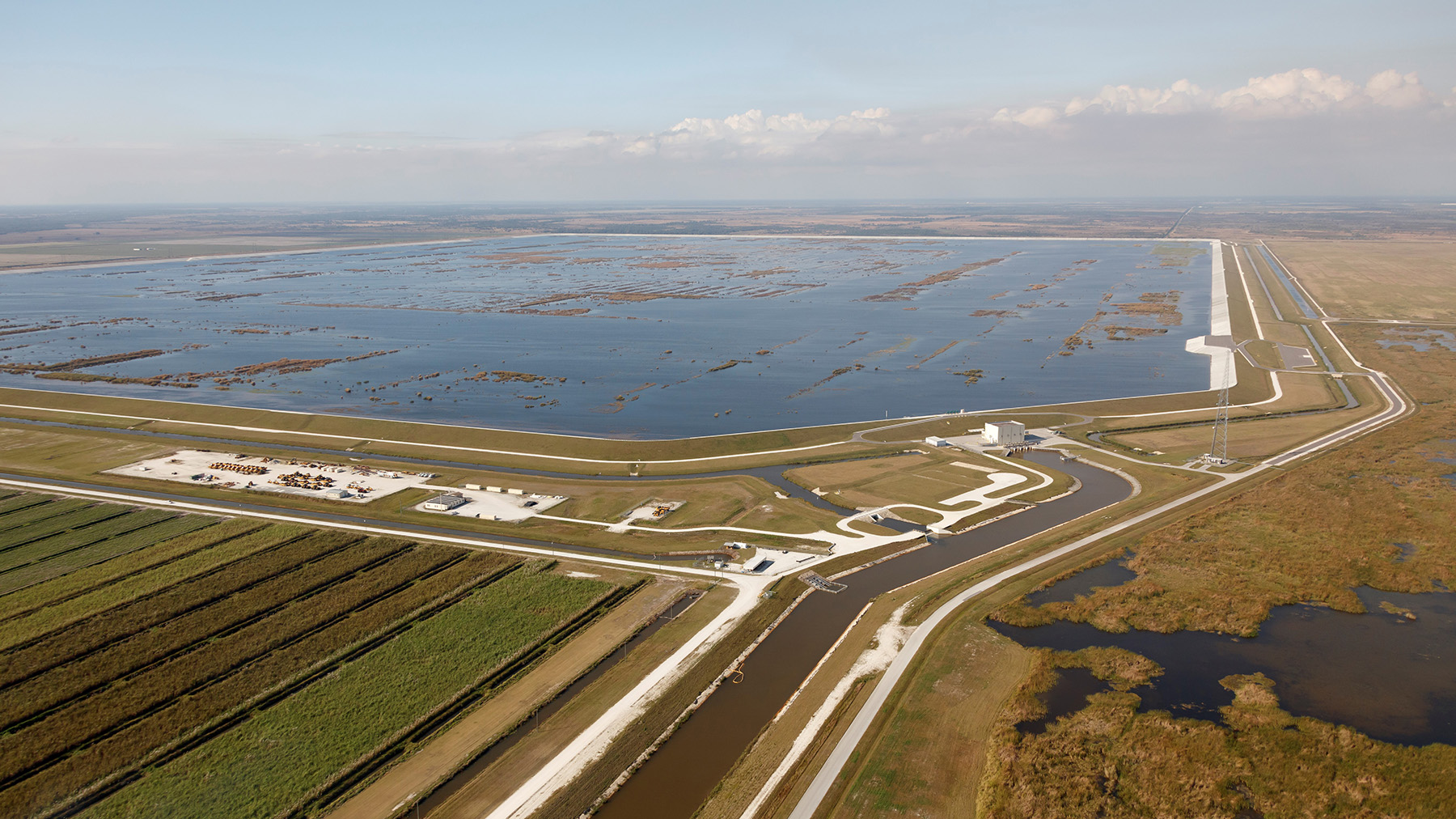
Project: C-44 Reservoir and Stormwater Treatment Area, Indiantown, Florida
Engineer of record: Eduardo Colchado, P.E., HDR
Summary: Florida’s Lake Okeechobee and its waterways are some of America’s most biodiverse ecosystems. These waters are harmed by runoff from the C-44 basin and agricultural chemicals as well as freshwater releases from the lake itself. As part of the Comprehensive Everglades Restoration Plan, water now passes through a 3,400-wetted-acre reservoir and a 6,300-acre stormwater treatment area, removing nutrients and sediment. The project also includes 100 mi of new embankments, canals, and berms as well as a new pump station, gravity reservoir control structure, communications and remote operating systems, and an above-ground reservoir built to withstand a Category 5 hurricane.

Project: Council Bluffs Interstate System Dual, Divided Freeway, Council Bluffs, Iowa
Engineer of record: Mark Pohlmann, P.E., PTOE, HDR
Summary: The 14 mi Council Bluffs Interstate System Improvement Program, completed under budget and ahead of schedule, accomplishes three goals: accommodates future development, lessens area congestion, and increases the interstate system’s safety with its reconfigured interchange ramps, intelligent sensor and messaging system that manages traffic more efficiently, and other features. The hallmark of this project is a new 3 mi dual, divided highway, which offers distinct interstate lanes separated by a concrete barrier for through and local traffic, which, according to the submission, is the region’s first such roadway.
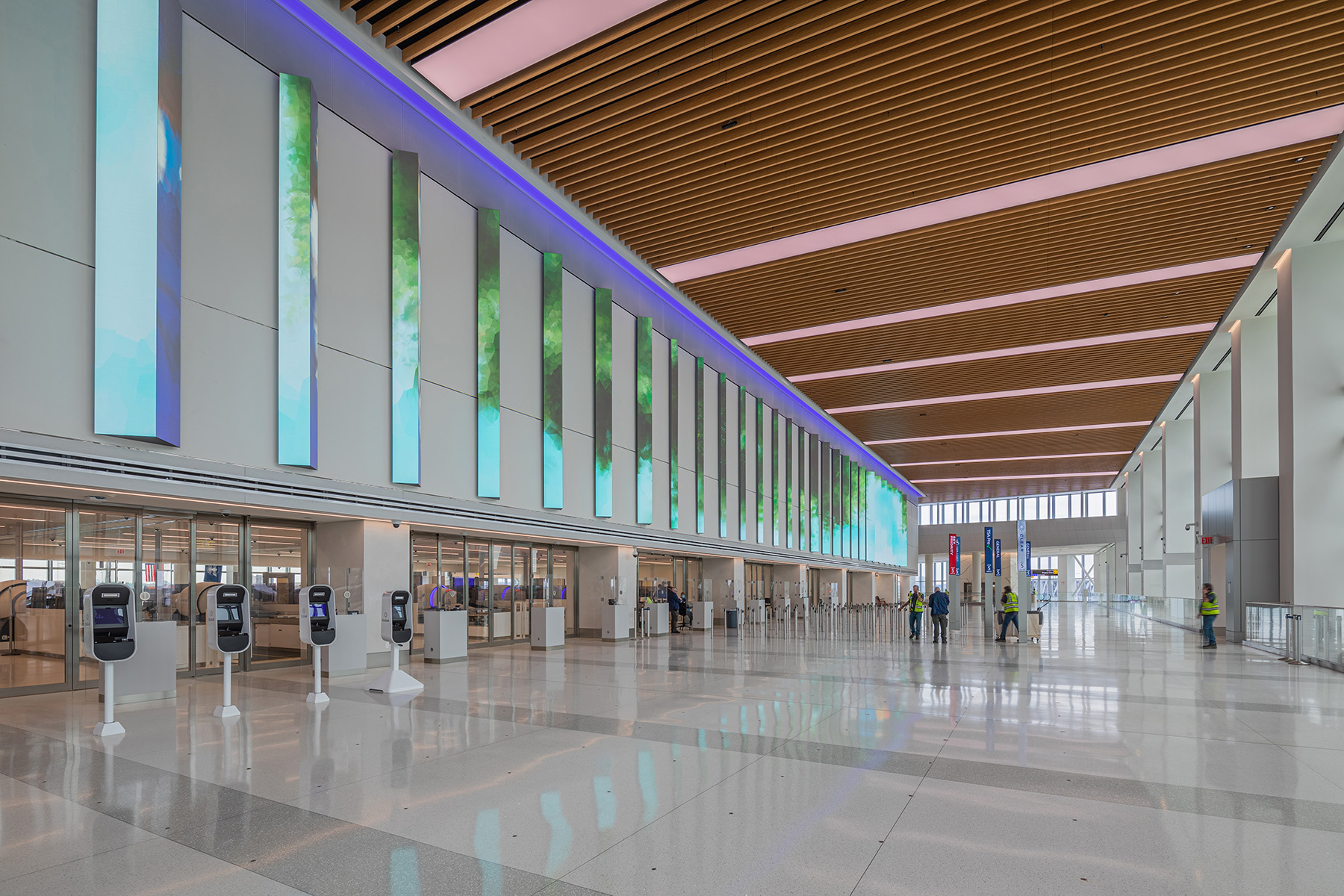
Project: Delta Air Lines New Terminal C, Queens, New York
Engineer of record: Emanuele Incorvaia, P.E., PMP, LEED AP BD+C, ENV SP, Burns & McDonnell
Summary: Delta Air Lines has constructed a new resilient and environmentally friendly terminal at LaGuardia Airport that will help the airport achieve its goal of reducing its greenhouse gas emissions by 80% by 2050 and help Delta reach its goal of becoming the first carbon-neutral airline. Delta will decrease its fuel consumption and pollution through new dual taxi lanes between concourses and a flexible gate configuration for aircraft. The design placed critical systems on upper levels and emphasized floodproofing to keep operations functioning during a major storm. New interior features include more seating and concession space as well as a “sensory room” for travelers with special needs.
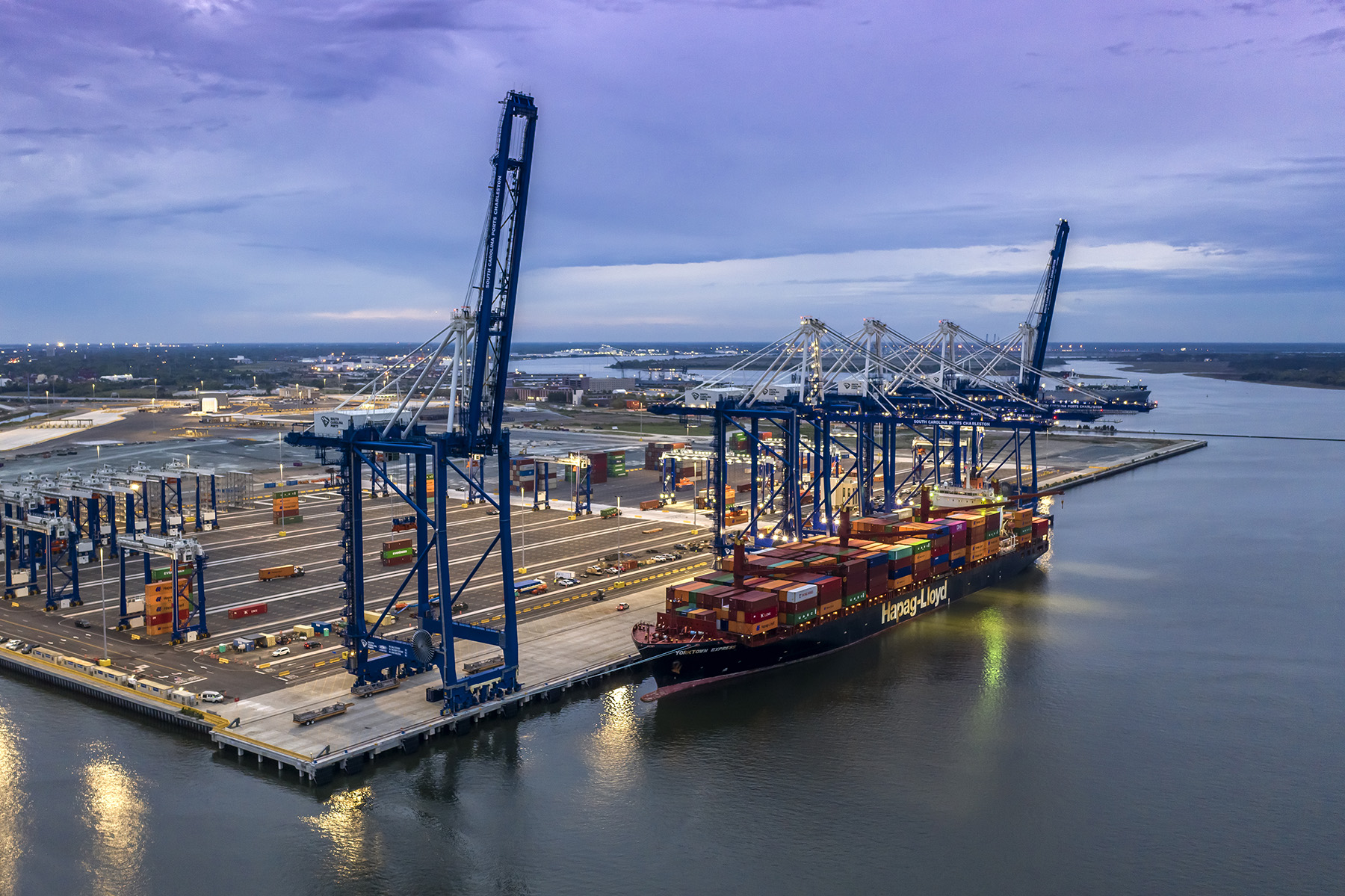
Project: Hugh K. Leatherman Terminal Phase 1, Charleston, South Carolina
Engineer of record: The HLT Design Team
Summary: The new 135-acre terminal, the first greenfield container terminal to open in the United States in the last 10 years, is a hearty solution to supply chain bottlenecks in the Southeast. The structure boasts a 1,400 ft berth, a 700,000 TEU (20-foot equivalent unit) container yard, refrigerated container racks, advanced gate technologies, and an expanded fleet of five rail-mounted ship-to-shore electric gantry cranes, among other features. For the South Carolina Ports Authority, the terminal is a “critical hub” that will keep the state “globally competitive” far into the future, according to the entry.
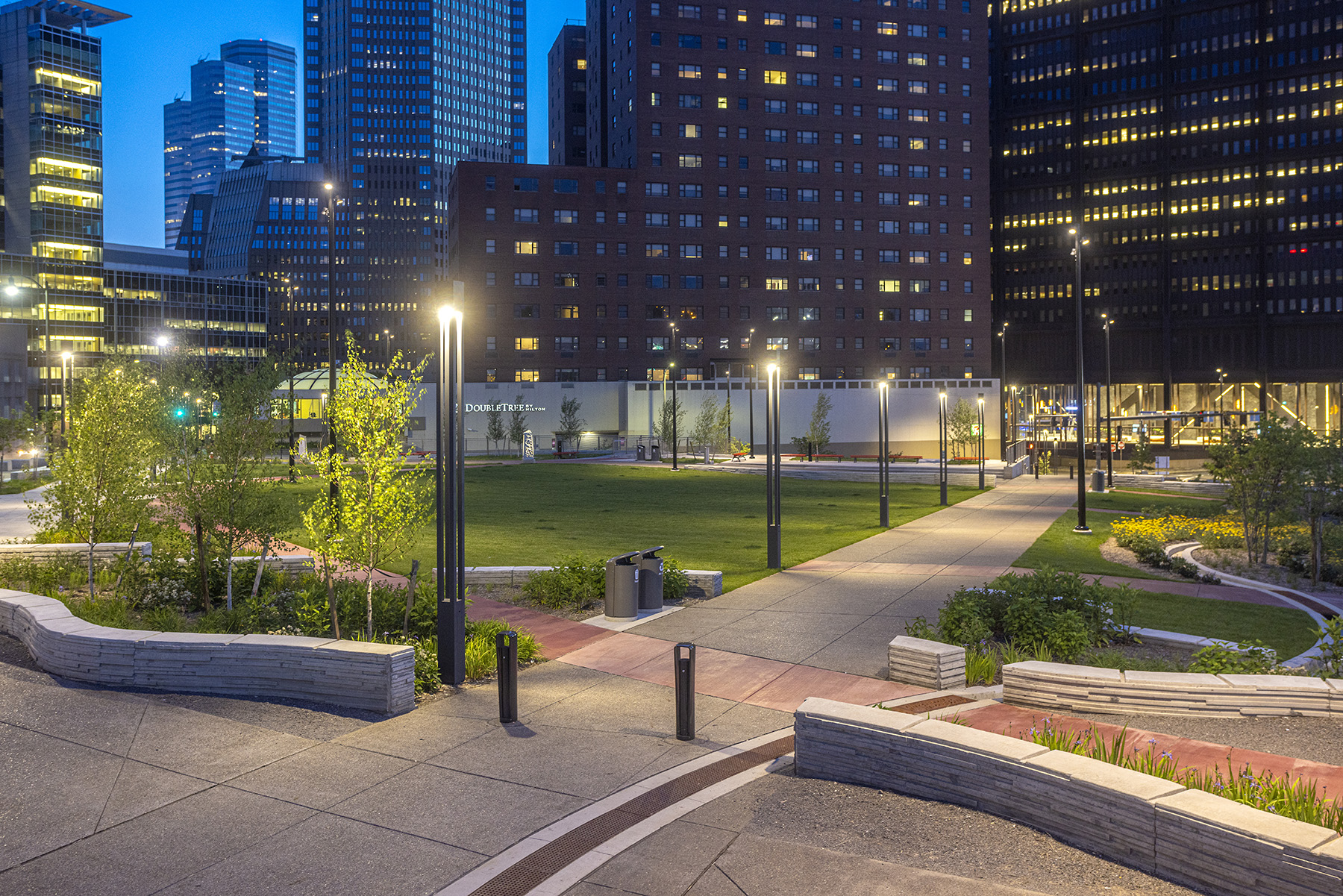
Project: I-579 Urban Open Space Cap, Pittsburgh
Engineer of record: Roger Eaton, P.E., HDR
Summary: In the 1950s, Pittsburgh’s Hill District was separated from downtown after the construction of today’s Interstate 579, creating a “‘concrete canyon’ of tall retaining walls and noisy interstate traffic,” according to the entry. The project restores the predominantly African American neighborhood’s access to downtown Pittsburgh via a 3-acre, tree-lined park. Hill District residents contributed artwork to the park’s “story walls” that depict the area’s history. Native plantings reduce interstate noise, while performance spaces, an outdoor classroom, amphitheater, and bike pathways offer the community much-needed green space.
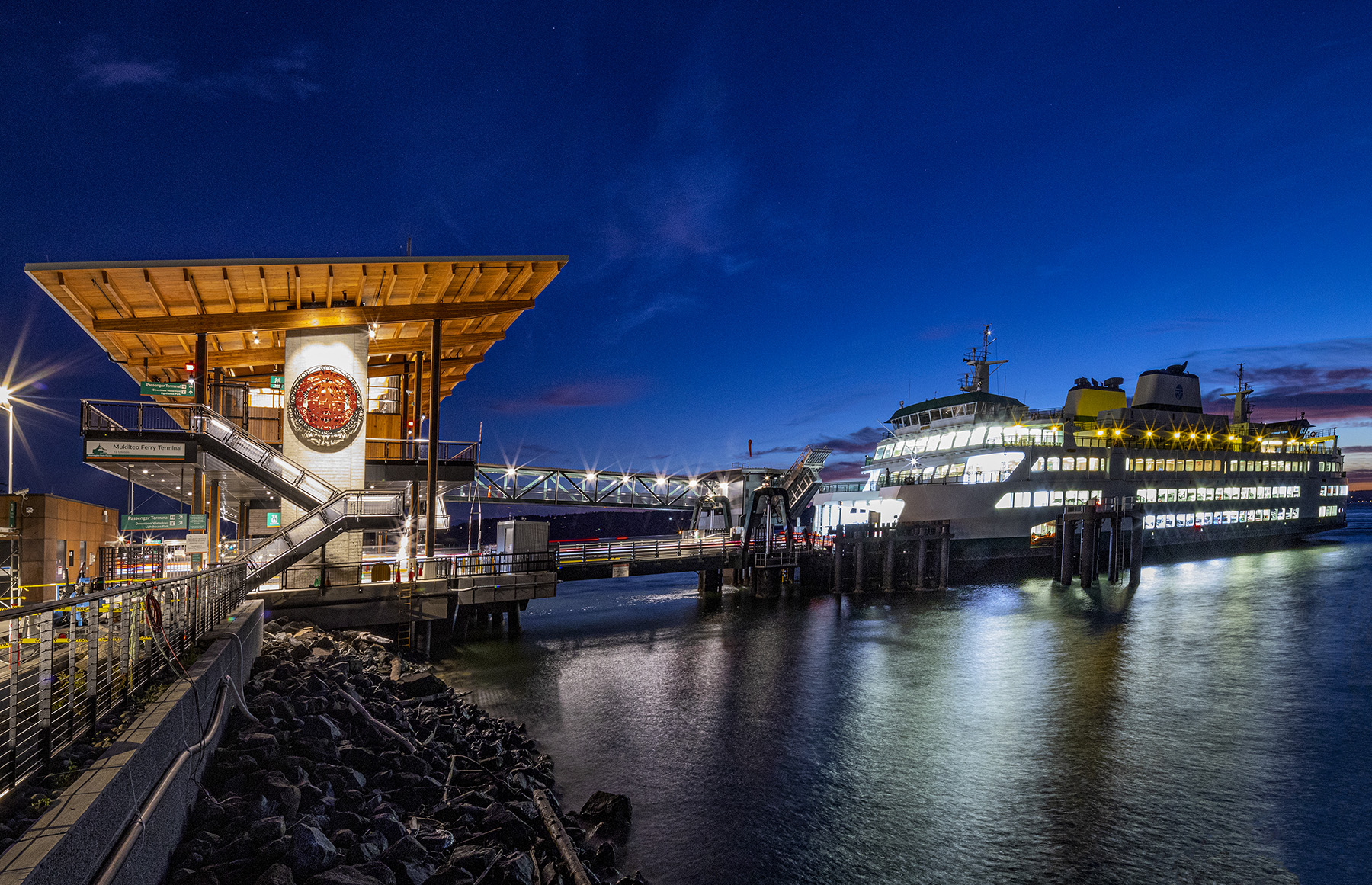
Project: Mukilteo Multimodal Ferry Terminal, Mukilteo, Washington
Engineer of record: Andrew Bennett, P.E., KPFF Consulting Engineers
Summary: Mukilteo Ferry Terminal is a Washington State Ferries project in collaboration with the Native Salish Tribes. The hub’s main building is an homage to the Native American longhouse and offers ferry, car, truck, train, bus, bike, and pedestrian access, per the award entry. Marine and land work comprised shoreline stabilization, a movable vehicle transfer bridge, an Americans with Disabilities Act-compliant fishing pier, innovative stormwater treatment systems, a new transit center, existing terminal demolition, utilities installation, and more. The terminal honors Native peoples through artwork displays and with signs that explain traditional uses of area resources.
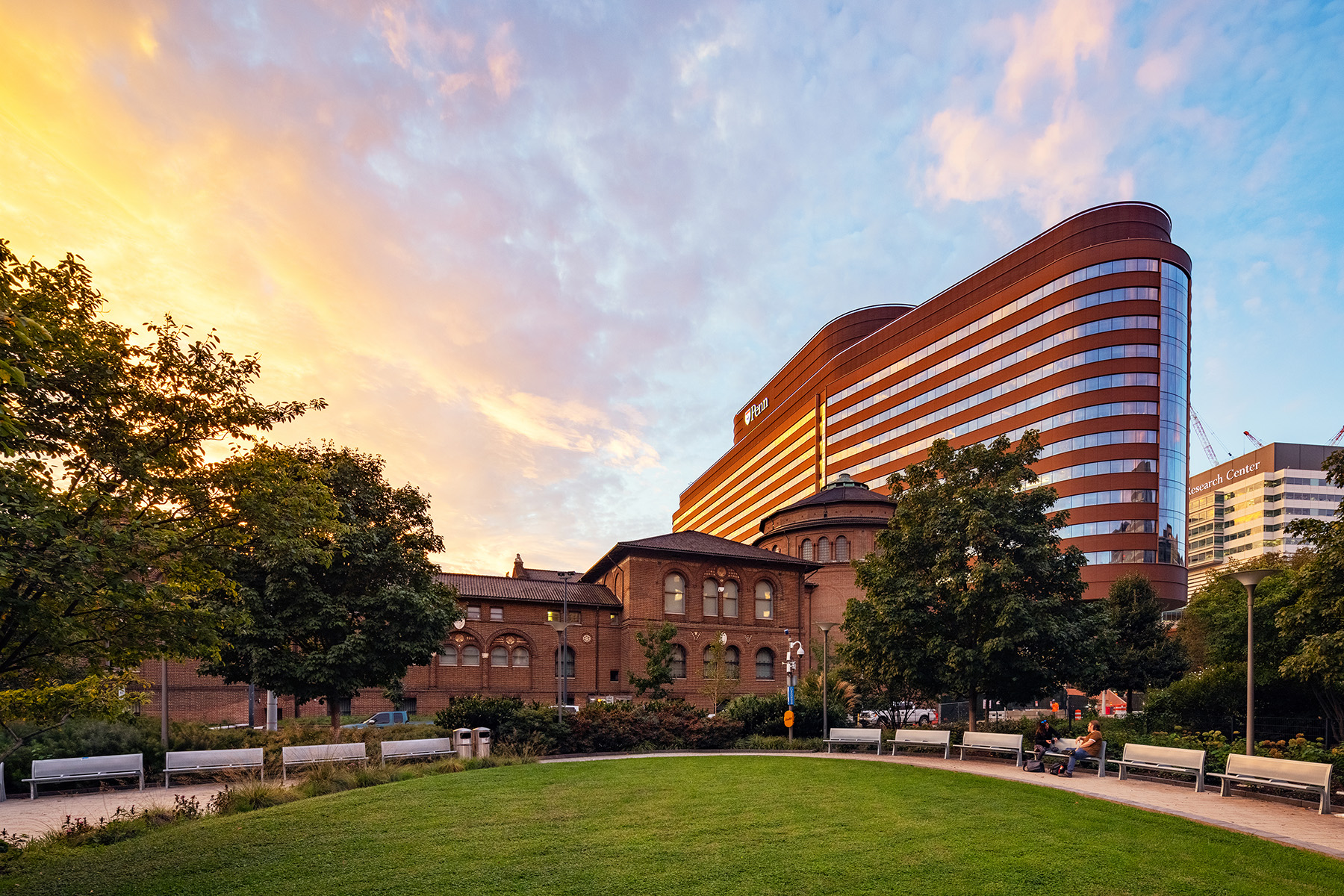
Project: The Pavilion at the Hospital of the University of Pennsylvania, Philadelphia
Engineer of record: Joseph Krzyzewski Jr., P.E., LEED AP BD+C, HDR
Summary: Penn Medicine’s largest project to date, the 17-story, 1.5 million sq ft hospital has a below-grade, 690-space parking garage, 504 private patient rooms, and 47 operating/intervention rooms. Three pedestrian sky bridges connect the pavilion to the Hospital of the University of Pennsylvania and Perelman Center for Advanced Medicine. Multidisciplinary team PennFIRST ensured the project’s successful execution on an irregularly shaped, narrow urban site. In a nod to Philadelphia tradition, public and outdoor spaces are “woven” together, connecting the pavilion to the Penn Museum and public transit.
Matt Fogleson is the technical editor for Civil Engineering.
Celeste C.B. Bennett is the writer/editor for Civil Engineering.
This article first appeared in the November/December 2023 print issue of Civil Engineering as “The 2023 Outstanding Civil Engineering Achievement Awards.”
Interested in submitting your project for next year? For submission requirements and other details, visit the Outstanding Civil Engineering Achievement Award page.




